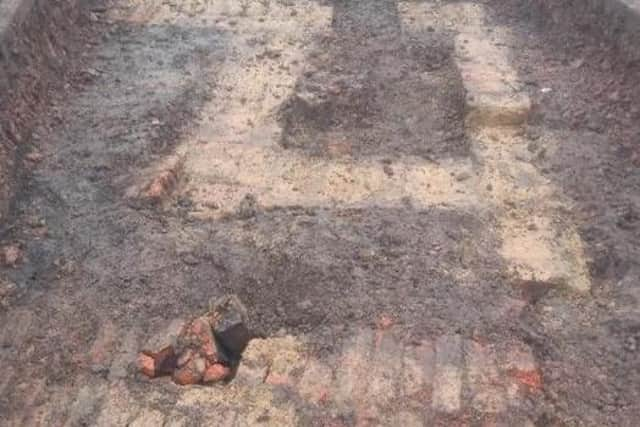History revealed in Nuneaton dig


Excavations at Abbey Street in Nuneaton have shown the site has been occupied for hundreds of years - with artefacts dating from the 18th century unearthed.
The work is being undertaken as part of the Transforming Nuneaton programme which will see the site occupied by a hotel, leisure buildings, food hall, college facility and a multi-storey car park.
Advertisement
Hide AdAdvertisement
Hide AdAs part of that, Edinburgh-based Headland Archaeology excavated three archaeological trial trenches at the Abbey Street Car Park.
The site of the trenches was occupied by buildings and related plots that fronted the south side of Abbey Street, with the potential to contain remains of archaeological significance relating to the medieval and later periods of the town’s history.
A spokesman for Headland Archaeology said: “Archaeological remains were found to survive relatively frequently.
“Spot dates from pottery recovered from trenches one and three indicate a late 18th/early 19th century date which is consistent with the presence of structures shown on first edition Ordnance Survey mapping.
Advertisement
Hide AdAdvertisement
Hide Ad“There is a background of low level prehistoric and Romano-British activity in the general environs of the site, but no specific known potential, an Anglo-Saxon settlement was established by the ninth century but there is little recorded evidence of archaeological remains from this period.’’
Abbey Street is thought to have formed a route connecting medieval settlement in Nuneaton to the Benedictine Priory of St Mary to the north-west of the site. The core of the main settlement is likely likely to have lain to the south-east of the evaluation area, around Market Place.
The town centre was heavily redeveloped from 1947 into the 1960s, resulting in the demolition and clearance of the car park area of the site, including the 19th century gas works in the south of this area.
The borough council’s director of regeneration, economy and assets, Dawn Dawson, said: “Every piece of evidence contributes to Nuneaton’s story as we build the next generation of buildings that will make up the town centre, it is good to learn a little more about past uses of this site.’’
